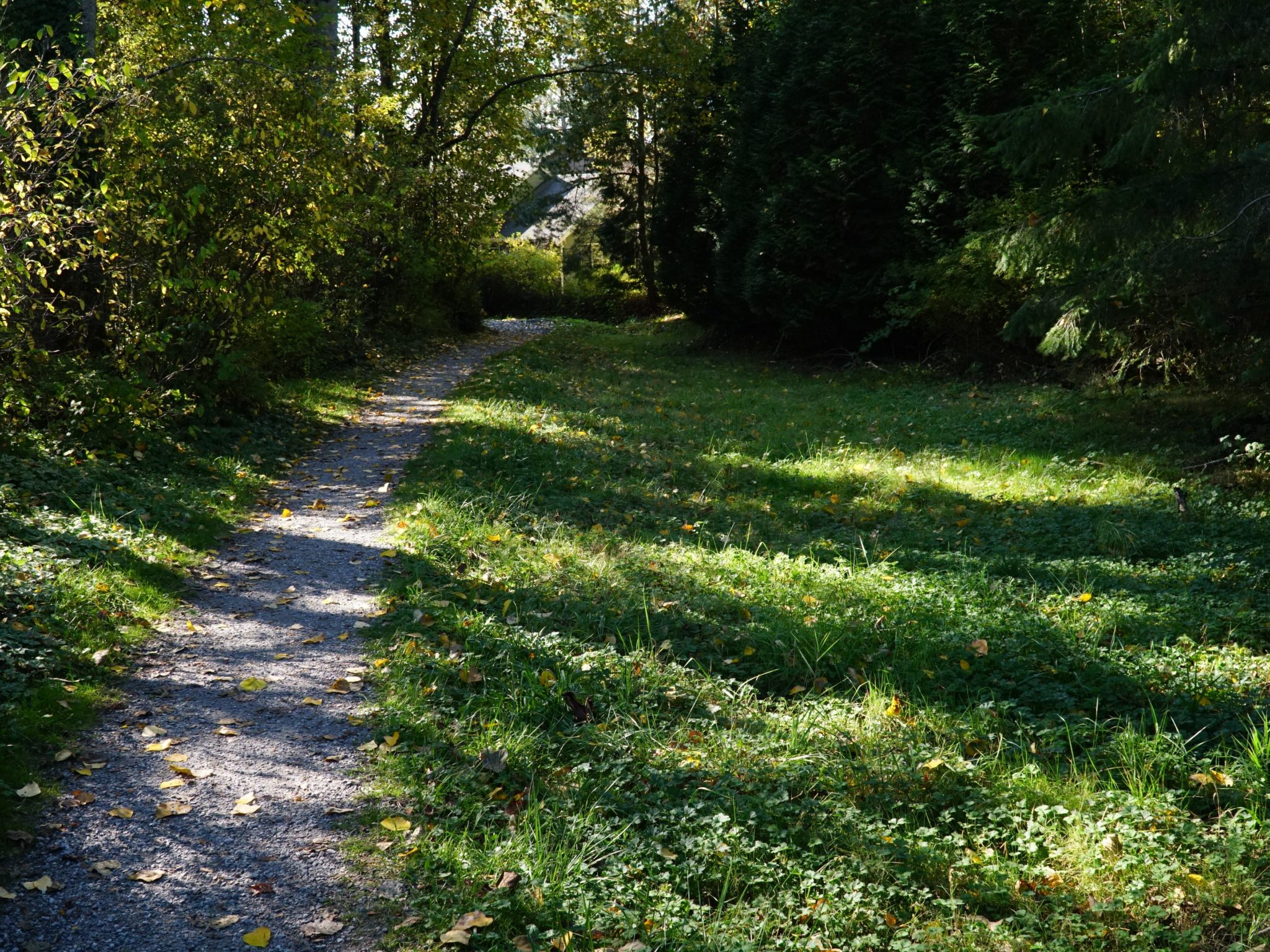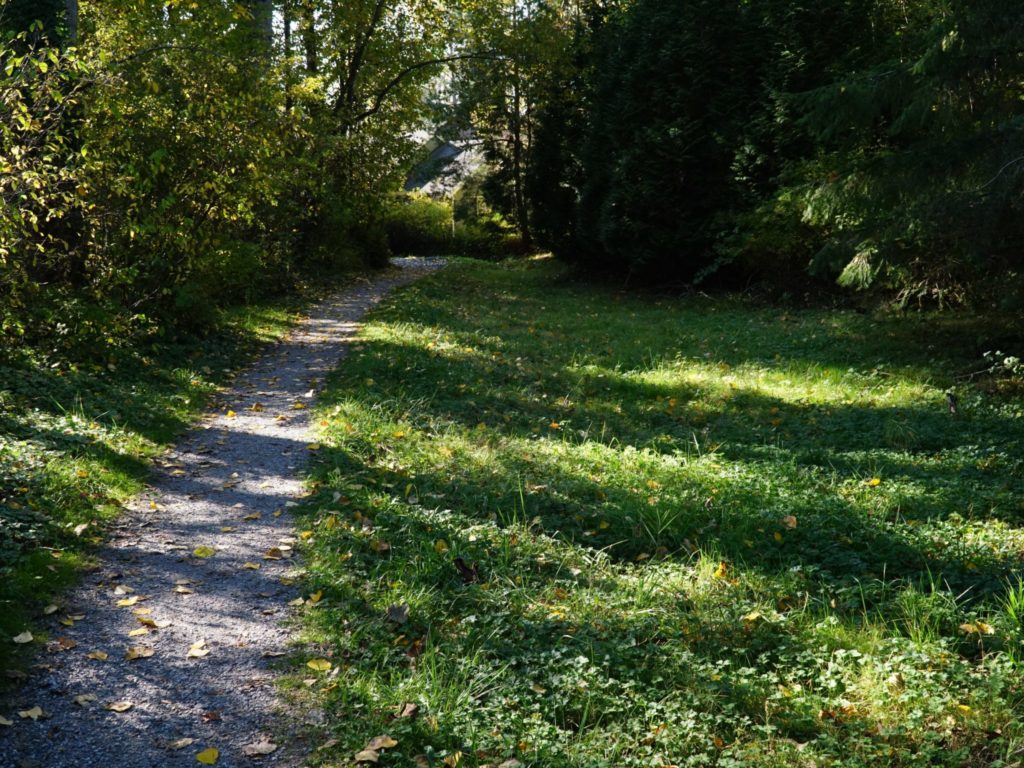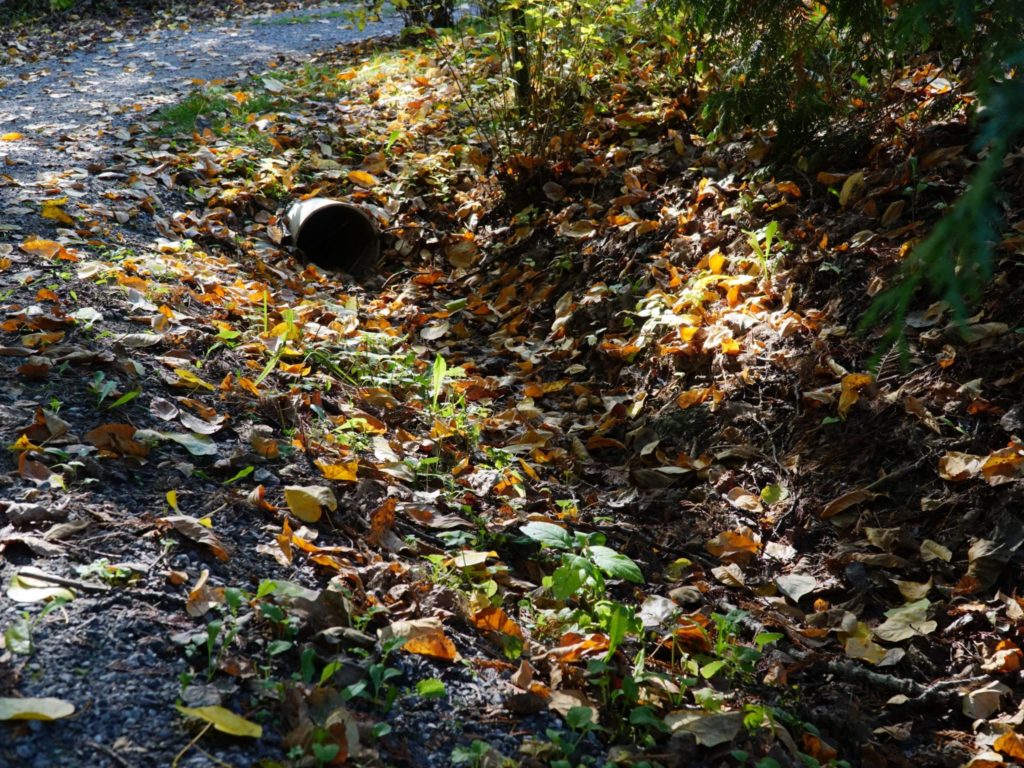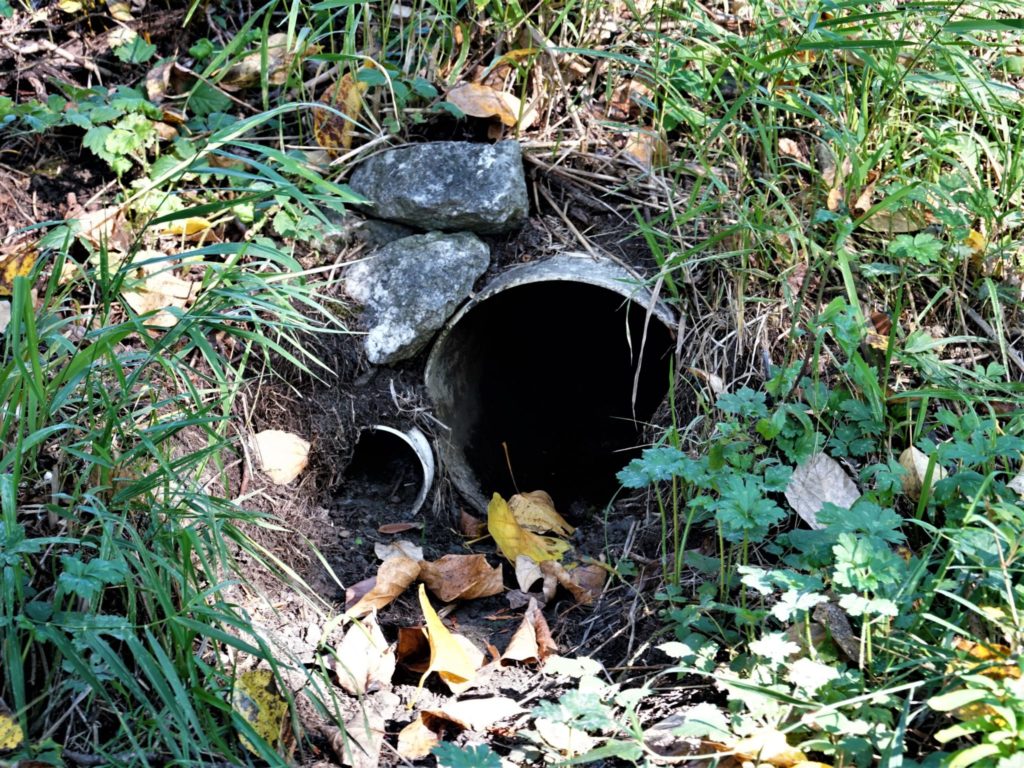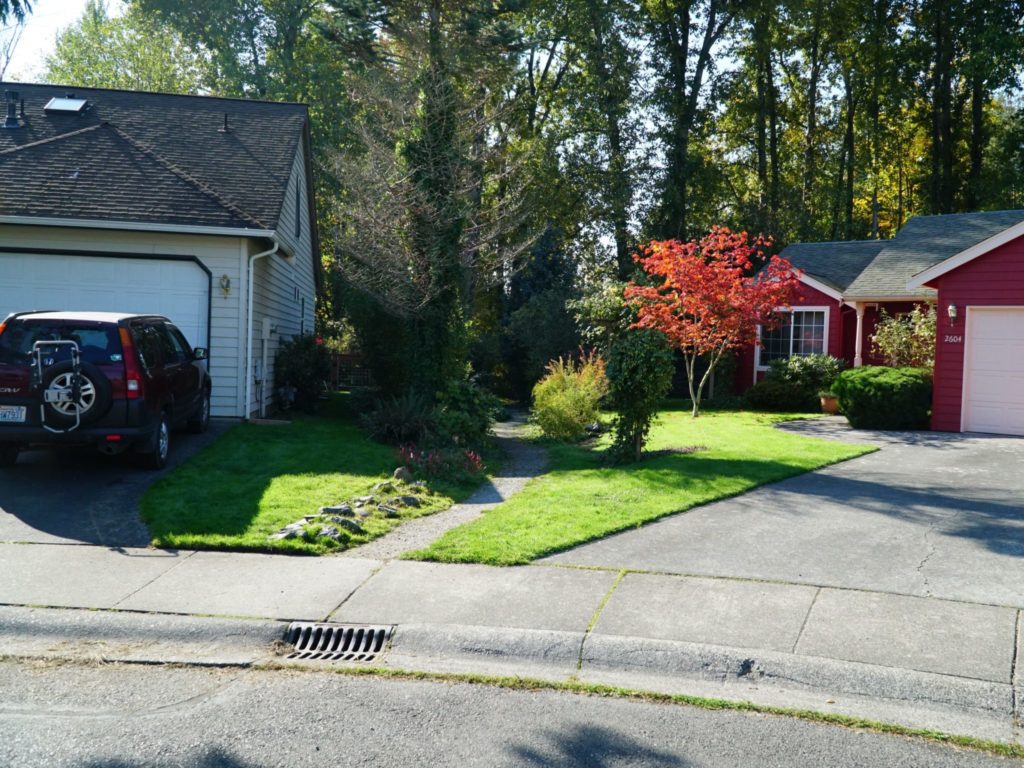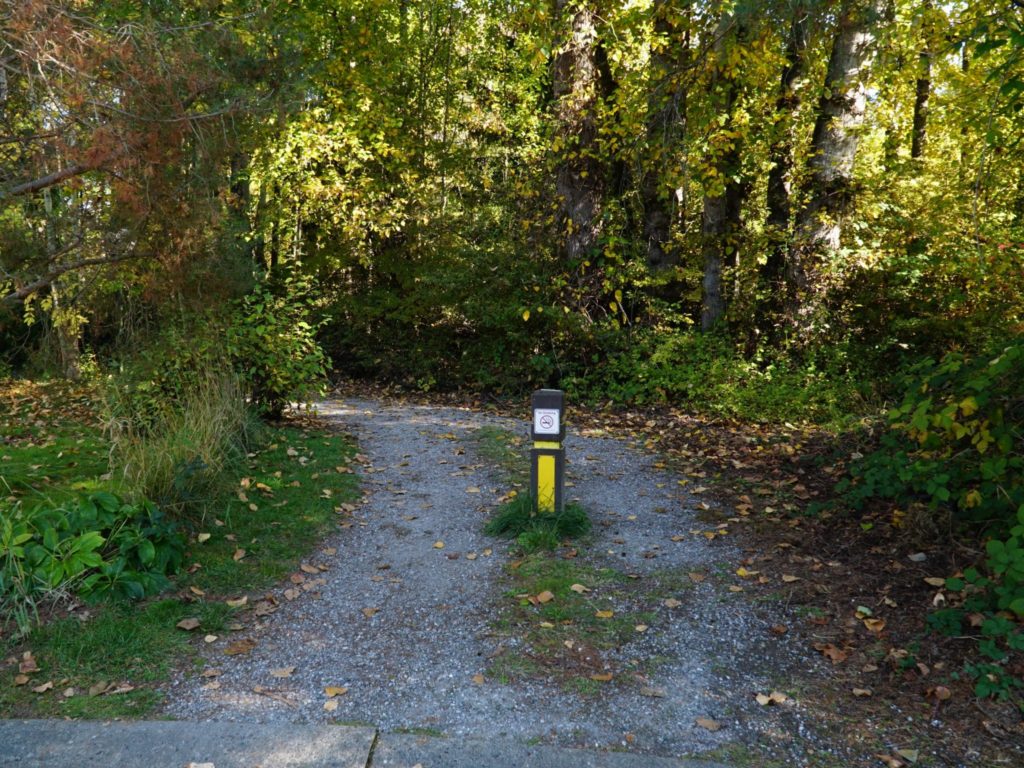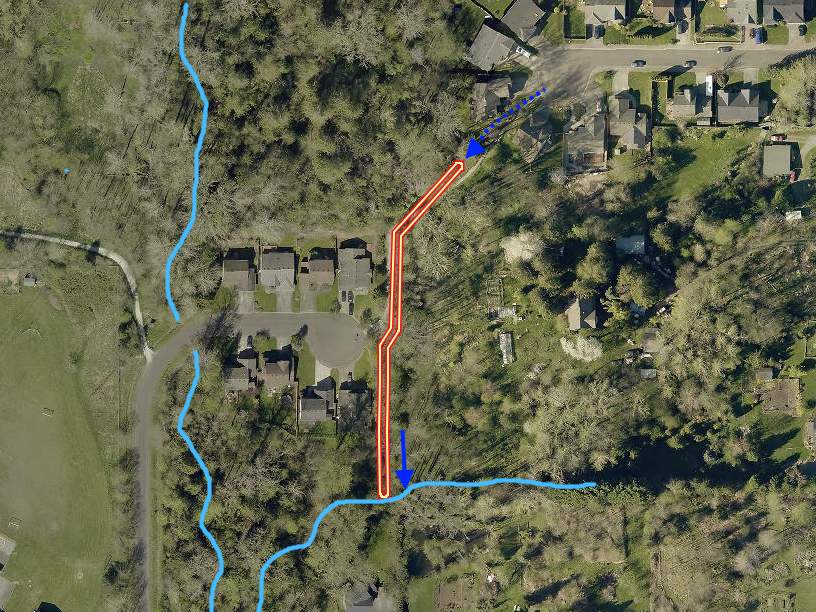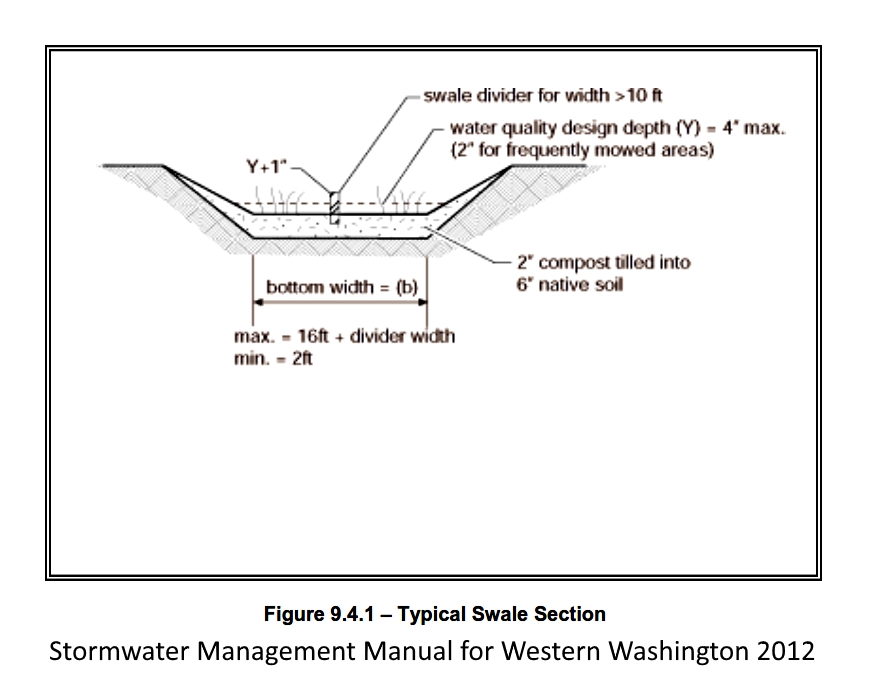Where is it located? It’s visible along a small trail that starts at the cul-de-sac between New Haven Place and Roslyn Place. As you walk the trail , watch for this bioswale alongside the trail.
What’s special about this place? This low place alongside the trail looks like a grassy lawn in the forest, but it’s really a bioswale. Bioswales are a low-cost, high-value way to treat stormwater runoff flowing from a neighborhood like Roslyn Place. The grass cover mimics natural processes and improves water quality.
image gallery
select any photo to see a slideshow
